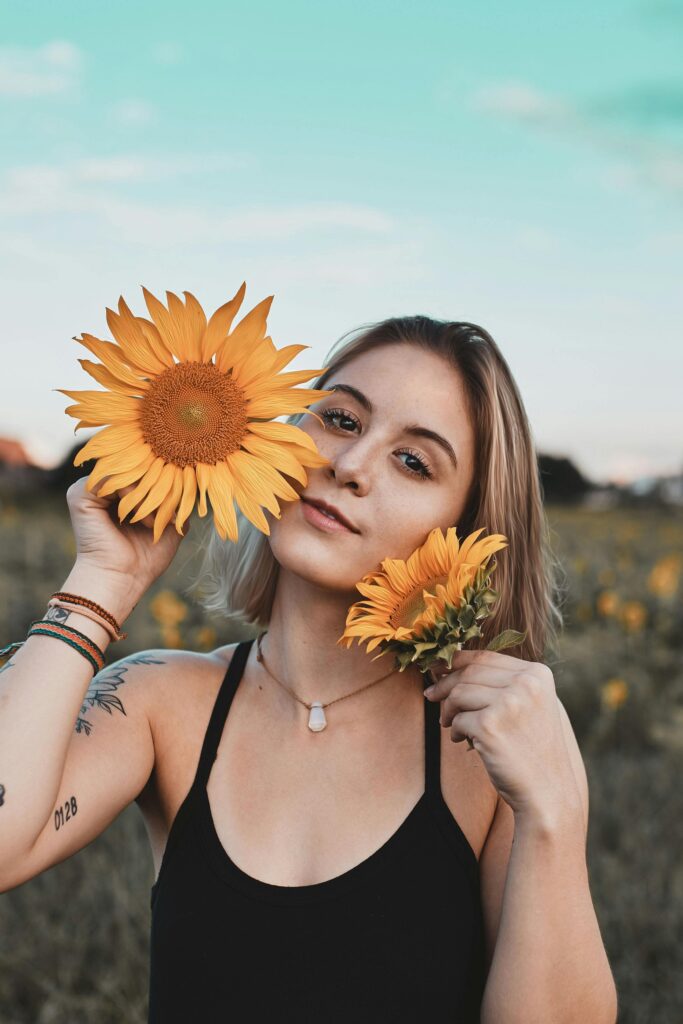Incorporating Australian Flora into Modern Tattoo Designs
Australia’s landscapes are a rich tapestry of botanical wonders. From the vibrant blooms of the waratah to the intricate patterns of the banksia, Australian flora presents an array of natural beauty that is ripe for artistic expression. In the realm of tattoo artistry, this botanical bounty offers a distinctive and meaningful avenue for personal and cultural expression.

If you’ve ever gazed at the intricate details of Australian flora and thought, “That would make an amazing tattoo,” you’re not alone. Australian flora tattoos are making waves in modern tattoo designs, weaving together nature and art in a captivating display of ink and imagination.
The Allure of Australian Flora
Australian flora is anything but ordinary. Its diversity ranges from the familiar eucalyptus to the exotic grevillea, each species boasting unique characteristics that can translate beautifully into tattoo art. Take, for instance, the majestic waratah, a flower that not only adds a splash of bold color but also symbolizes strength and resilience. Similarly, the delicate fern fronds with their intricate patterns can create a stunning, detailed tattoo that speaks to growth and renewal.
What sets Australian flora apart from other botanical designs is its connection to the land and its people. Many of these plants have deep cultural significance, often tied to Aboriginal traditions and stories. Incorporating these elements into tattoos not only celebrates Australia’s natural beauty but also pays homage to its rich cultural heritage.
From Nature to Ink: The Design Process
Transforming the vibrant and varied Australian flora into tattoo designs involves a blend of artistry and botanical knowledge. A skilled tattoo artist will consider several factors to ensure that the final design not only looks striking but also holds personal meaning for the wearer.
1. Choosing the Right Flora: The first step is selecting the flora that resonates with the individual’s personal story or aesthetic preferences. For instance, the vibrant hues of the Australian native hibiscus might appeal to someone seeking a bold and colorful design, while the subtle elegance of a eucalyptus leaf could be perfect for a more understated tattoo.
2. Integrating Cultural Elements: Many Australian plants have significant cultural stories attached to them. For example, the wattle, Australia’s national floral emblem, is deeply embedded in the country’s identity. Tattoo designs incorporating such elements can carry a sense of national pride and connection to heritage.
3. Design and Detailing: A crucial aspect of turning flora into tattoos is capturing the intricate details that make each plant unique. This requires a meticulous approach to ensure that the design reflects the fine lines, textures, and colors of the real-life plant. Artists often use shading and color gradients to replicate the natural appearance of the flora, creating a tattoo that is both visually stunning and true to life.
Australian Flora Tattoos: Styles and Inspirations
Modern tattoo artistry has embraced a wide range of styles, each of which can be effectively used to showcase Australian flora. Here’s a glimpse into how different styles can be used to bring these botanical designs to life:
1. Watercolor Tattoos: Watercolor tattoos are known for their vibrant and fluid aesthetics, which can perfectly capture the lively colors of Australian flowers. Imagine a burst of orange and red capturing the essence of a waratah, or the gentle blending of greens and blues illustrating a banksia. This style adds a painterly effect to tattoos, making them look like living, breathing works of art.
2. Geometric Tattoos: For a more modern twist, geometric tattoos incorporate elements of symmetry and abstraction. Australian flora can be stylized into geometric shapes, creating a fusion of natural beauty and contemporary design. For example, a stylized representation of the Australian wattle could be framed within hexagonal shapes, blending the organic with the structured.

3. Minimalist Tattoos: If subtlety is more your style, minimalist tattoos can elegantly capture the essence of Australian flora. Simple line drawings or single-color designs can convey the beauty of plants like the eucalyptus or the kangaroo paw in a refined and understated manner. This approach focuses on essential lines and shapes, allowing the natural beauty of the flora to shine through without overwhelming detail.
4. Traditional Tattoos: Traditional tattoo styles, with their bold outlines and classic color palettes, can also embrace Australian flora. These designs often include elements of old-school tattooing with a modern twist, such as a classic rose with Australian bush leaves or a traditional sailor’s anchor surrounded by native flowers.
The Role of Personal and Cultural Significance
Tattoos are deeply personal, and incorporating Australian flora into designs adds layers of meaning and connection. For many Australians, native plants are more than just pretty pictures—they represent a connection to the land, its history, and its cultural narratives.
1. Personal Symbolism: Each plant can carry its own symbolism. For instance, the gumtree, often associated with strength and resilience, might be chosen by someone who sees themselves as a pillar of strength. Meanwhile, the delicate bluebell could symbolize new beginnings or personal growth.
2. Cultural Significance: Incorporating flora that holds cultural significance can also be a way to honor Aboriginal heritage and acknowledge the traditional custodians of the land. Designs featuring traditional patterns or motifs inspired by Indigenous art can offer a respectful nod to Australia’s rich cultural tapestry.
3. Environmental Awareness: Tattoos featuring native plants can also reflect an individual’s commitment to environmental conservation. By choosing flora that is endangered or threatened, one can raise awareness and express their dedication to preserving Australia’s unique biodiversity.
Caring for Your Botanical Tattoo
Once you’ve chosen the perfect design and undergone the tattooing process, it’s essential to take proper care of your new ink to ensure it heals well and maintains its beauty.

Follow these general tips for tattoo aftercare:
- Follow Artist’s Instructions: Your tattoo artist will provide specific aftercare instructions tailored to your tattoo. Adhering to these instructions is crucial for optimal healing.
- Keep It Clean: Gently wash the tattoo with a mild, unscented soap and water. Avoid scrubbing or using harsh chemicals.
- Moisturize: Apply a recommended aftercare ointment or lotion to keep the tattoo hydrated and promote healing.
- Avoid Sun Exposure: Protect your tattoo from direct sunlight, as UV rays can cause fading and damage.
- Don’t Scratch or Peel: As the tattoo heals, avoid scratching or peeling the skin to prevent scarring and ensure the ink settles properly.
Celebrating Australian Flora Tattoos
Australian flora tattoos represent a fusion of nature, culture, and personal expression. They are not just decorative; they embody the essence of Australia’s diverse landscapes and the stories they tell. Whether you’re drawn to the vibrant colors of native flowers or the intricate patterns of indigenous plants, incorporating Australian flora into tattoo designs offers a unique way to celebrate and connect with the natural world.
If you’re inspired to explore how Australian flora can be transformed into a stunning piece of body art, Tattoos Down Under is the perfect place to start. Their expert tattoo artists specialize in capturing the beauty of Australian flora, ensuring that your tattoo is not only a beautiful design but also a meaningful and personal statement.
For those ready to bring a piece of Australia’s botanical beauty to life on their skin, visit Tattoos Down Under to begin your tattoo journey. Embrace the natural elegance of Australian flora and let your tattoo tell a story that is uniquely yours.


Leave a Reply